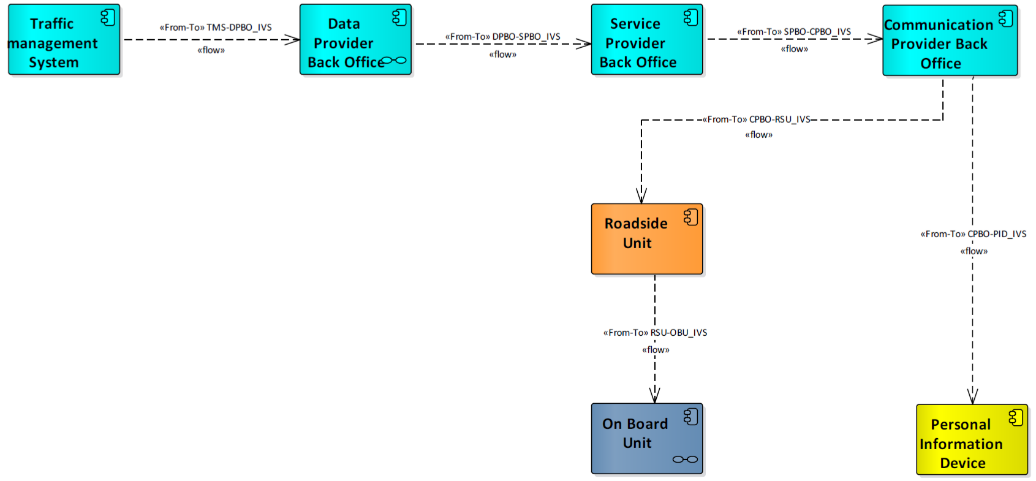In-Vehicle Signage (IVS)
The objective of In-Vehicle Signage is to improve traffic safety via additional means to provide drivers with in-vehicle signage information.
Taking into account various stakeholders’ views, a list of business model blueprints that address current or future challenges of urban areas, together with their operating and value-capture scenarios depicting the inner-workings of the business models, and the exchange of costs-benefits among stakeholders, have been created for the In-Vehicle Signage service.
Detailed information about In-Vehicle Signage architecture can be found here.

Within the C-MobILE project the In-Vehicle Signage service is implemented in five Deployment Sites: Barcelona, Bordeaux, Newcastle, Thessaloniki, and Vigo.
In Barcelona the In-Vehicle Signage service is implemented using cellular communication technology. This service provides information about speed limits in the whole city as well as on the main access roads (which is also displayed on the traffic panels). Applus IDIADA is the service provider receiving information from the mobility databases of both the City Council and the Servei Català de Trànsit’s and providing it to the road users through an App.
In Bordeaux the IVS service is implemented using both cellular and ITS-G5 communication technologies. This service is deployed in 3 different zones :
- The city center, where users are informed about the 30 km/h speed limit in schools’ proximity
- The ring road, where users are informed about travel times and other information about the traffic status
- The A63 highway, where traffic information is also available on varabile message sign (VMS) installed on gantries
The service provider for IVS is NeoGLS and the service is available through the Appl “CTD – Connected Mobility”.
In Newcastle the IVS service delivers speed limit information using cellular communication technology. The data relates to the same route north out of the city centre as the GLOSA and green priority, a route on which there are multiple speed limit changes. However, the IVS delivers IVI messages using Zircon and Siemens technology, which is delivered for users of the CTD App developed by NeoGLS.
In Thessaloniki IVS is provided as static and dynamic information to drivers. The service provider, the Hellenic Institute of Transport (CERTH-HIT), uses information from its digital maps and information retrieved from the Variable Message Signs (VMS) operated by the Region of Central Macedonia (http://www.pkm.gov.gr/), which is responsible for the operation of the Traffic Management Center. This information is then provided to drivers through the CERTH-HIT App (cmobile.imet.gr).
In Vigo the In-Vehicle Signage service is implemented using cellular communication technology. This service provides information displayed on existing Variable Message Signs directly in vehicles in order to optimize the reception of the transmitted message by the conventional sign.
CTAG is the service provider managing traffic information gathered from the Traffic Management Centre of Vigo and the Spanish Traffic Directorate (DGT) and distributing it in real time to drivers through CTAG GeoServer using the local App.